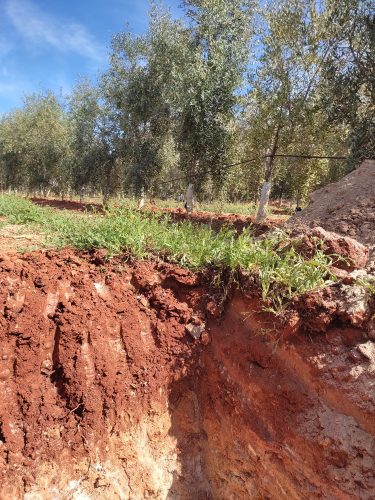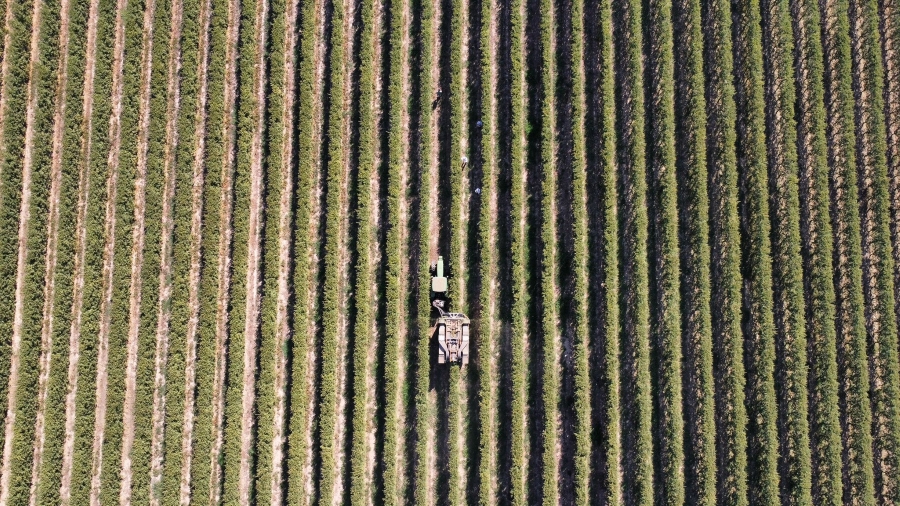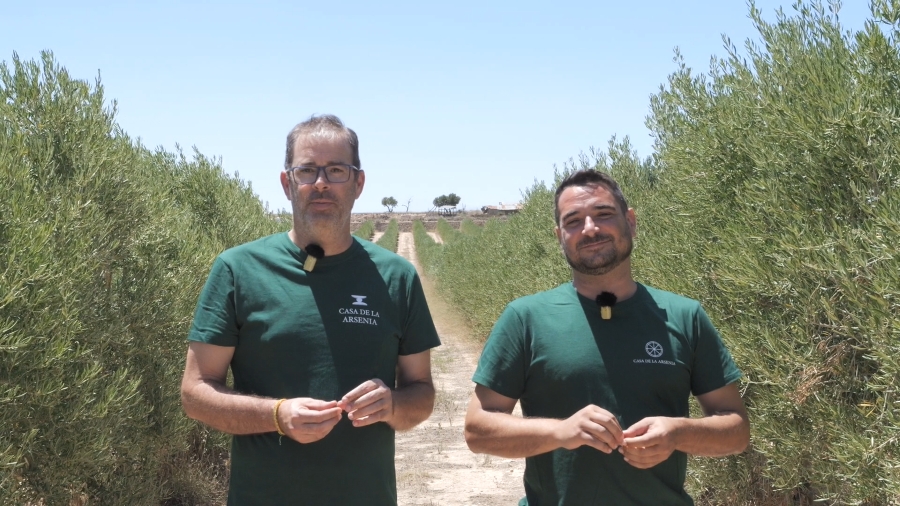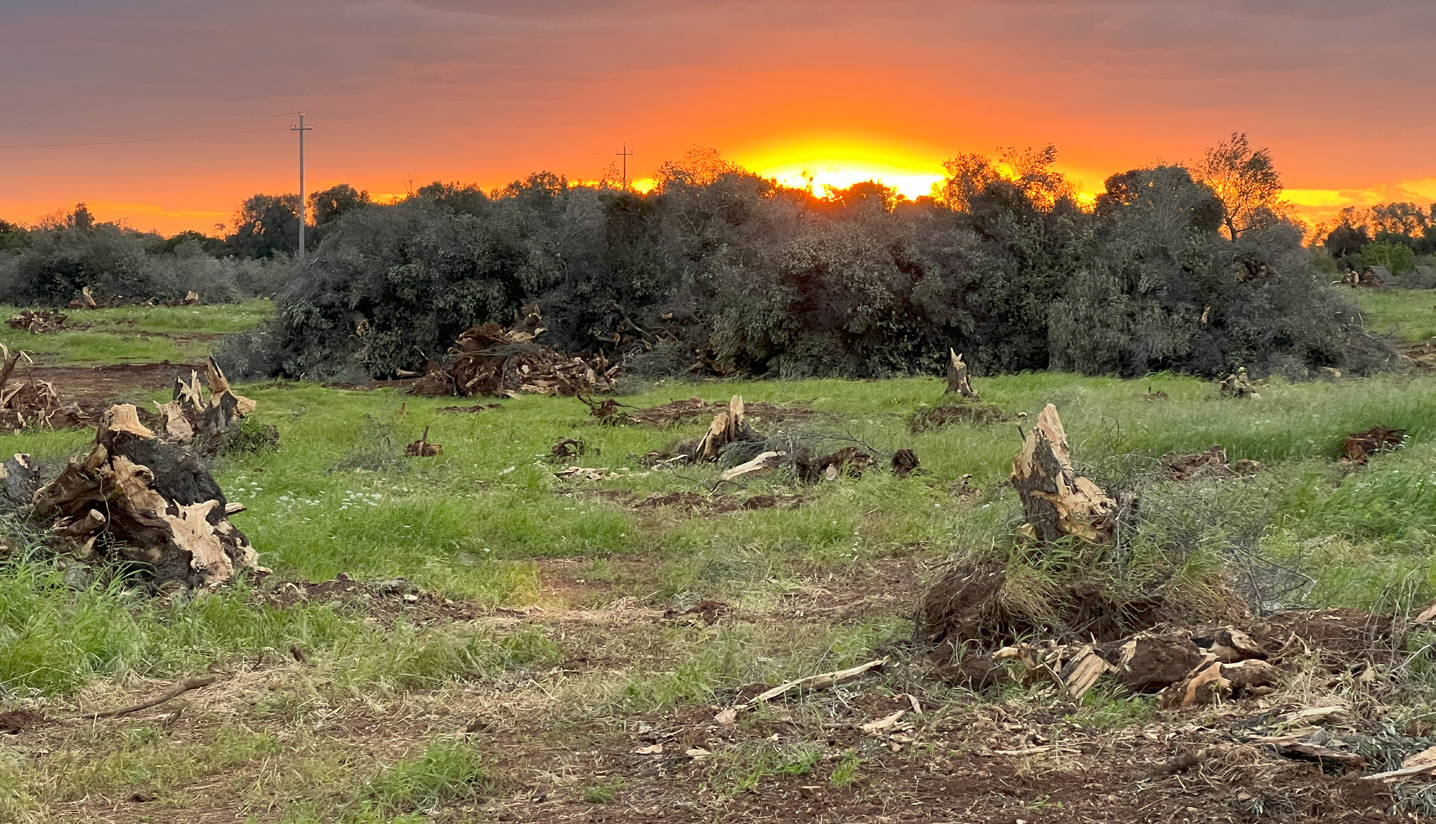Cultivation Practices to Increase Sustainability in Hedgerow Crops
Agriculture, both present and future—the one that will define future markets—has the imperative to ensure food supply while being efficient and sustainable. In this context, hedgerow cropping systems emerge as an ideal solution.
In our work on commercial farms, we have observed that hedgerow crops, when managed with proper cultivation strategies and technology, are achieving high levels of sustainability and significantly improving environmental indicators compared to other systems.
The Food and Agriculture Organization of the United Nations (FAO) projects that the world population will exceed 9 billion people by 2050, which implies an increase of between 60% and 70% in the demand for agricultural products. If this increase is not properly managed, it could lead to serious consequences, including soil depletion and contamination, loss of biodiversity, and ecosystem pollution due to excessive use of fertilizers and pesticides. This situation underscores the urgent need to adopt what has been called “sustainable agricultural intensification,” which harmonizes economic, environmental, and social objectives. The goal is to improve the efficiency of arable land, maximize production per hectare, and enhance the resilience of the agricultural ecosystem, so technicians and producers must focus their efforts on producing more with less while improving ecosystem services.
Achieving sustainable agricultural intensification depends on the use of agricultural practices traditionally called agroecological, which aim to foster ecosystem development, with agricultural production being one of the outcomes of that development. Achieving environmentally and economically sustainable farms depends on adopting what we call agroecological practices, which do not necessarily have to be associated with organic certification or regenerative agriculture certification. They share some strategies, but the terms “organic” and “regenerative,” in recognized and quality certifications, imply a greater commitment and limitation in the use of products and practices.


That is why research centers are studying and promoting the use of agroecological strategies to provide information to producers. From my own research group, we are currently working on three projects in hedgerow olive and almond crops, funded nationally (CLIMCOVER and OLEACOVER) and at the European level (AGROSUS), in which we are documenting the practices to be used and the benefits to be obtained, summarized as follows:
No-tillage or minimum tillage: This cultural practice is fundamental. It consists of avoiding mechanical alteration of the soil through plowing or tillage. By not disturbing the soil, erosion is significantly reduced, its structure is maintained, microbial life is promoted, and desertification is prevented. Soil degradation has tripled in the last decade, and the average annual soil loss in Spain is around 14.2 tons per hectare per year, highlighting the critical importance of adopting this practice.
Use of cover crops: This cultural practice involves maintaining live vegetation or plant residues on the soil surface between crop rows or during fallow periods, which can be live, sown, spontaneous, or even pruning residues. By not leaving the soil bare, numerous benefits associated with soil health are obtained. According to the European Commission’s State of Nature Report (2020), between 60% and 70% of soils are unhealthy, which underscores the urgency of regenerating them through these cultural practices. The main benefits of using cover crops include:
- Contribution of organic matter: Plant biomass is incorporated into the soil, enriching it and improving its fertility.
- Development of microorganisms: Roots and plant residues create a favorable environment for the proliferation of beneficial microorganisms and enzymatic reactions that promote nutrient absorption and plant strengthening, potentially reducing fertilizer inputs and pesticide applications. Nutrient leaching is also avoided.
- Carbon sequestration: Cover crops capture carbon dioxide from the atmosphere, helping mitigate climate change. This effect becomes evident after several years of maintaining cover crops and will allow farms to enter carbon markets.
- Reduction of weeds: Establishing cover crops with proper management enables a gradual displacement of weeds, reducing the use of synthetic herbicides.
- Water availability: They improve rainwater infiltration, reduce evaporation, and consequently optimize water availability for plants.


Use of floral hedges: Planting hedges with diverse flowers attracts beneficial insects, including natural enemies of pests, which help preserve plant health biologically. In the case of aromatic plants, these hedges can also provide essential oils and extra income for the farm. They also promote pollinating insects (such as bees) that aid in crop pollination, improving production quality and quantity, and can generate additional income through products like honey. The same European Commission State of Nature Report (2020) states that one in ten species of bees and butterflies is at risk of extinction, highlighting this aspect as a crucial area for improvement in natural ecosystems through cultural practice management.
As we can see, adopting these strategies in an integrated manner can make us more efficient and reduce water, fertilizer, pesticide, herbicide inputs, external pollinators, increase carbon sequestration, and thereby reduce the carbon footprint, also fostering economic sustainability. With our experience, we have managed to convince numerous producers to adopt them, and they have been able to verify their efficiency.
At this point, we also document and recommend the use of technology that increases farm efficiency, directed from the Synergynuts platform. Thus, in hedgerow systems, we can see the benefits of using:
- Plant material: Rootstocks and varieties suitable for each area to achieve maximum production potential with maximum efficiency in radiation use and input utilization.
- Precision agriculture: Hedgerow models facilitate the implementation of sensors, subsurface irrigation, and digital tools to optimize the use of fertilizers, pesticides, and water. Monitoring these improvements allows us to quantify and define management strategies and verify them.
- Advanced mechanization: Its use increases efficiency in pruning, harvesting, soil management, weed reduction in crop rows, and treatment application, reducing costs and increasing system sustainability by reducing pesticide use and the carbon footprint.
- Renewable Energy: The implementation of agrivoltaic systems helps reduce energy costs and dependence on fossil fuels.
In summary, the combination of hedgerow cropping models with appropriate cultural practices and technologies not only increases production per hectare but also offers considerable environmental and economic advantages. This integration is consolidated as a viable, sustainable, and profitable solution for farmers, thus guaranteeing the long-term sustainability of woody crops and contributing to global food security.
References:
CLIMCOVER. Sustainability of woody crops through the use of cover crops: carbon sequestration, greenhouse gas emissions, and soil functionality. TED2021-129527B-I00.
OLEACOVER. Factors conditioning C sequestration, greenhouse gas emissions, soil functionality, and biodiversity in hedgerow olive groves with cover crops. PID2021-122998OB-I00.
AGROSUS. Agroecological strategies for sustainable weed management in key European crops.
Grant agreement ID: 101084084
SYNERGYNUTS PLATFORM.







